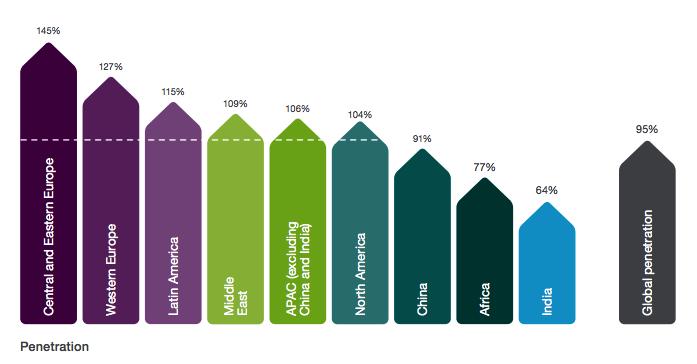People all around the world are using their mobile devices with growing regularity. New apps are constantly being developed giving everyone even more reason to rely more on mobile. Today, Ericsson released its latest report entitled “Ericsson Mobility Report: On the Pulse of the Networked Society” and, essentially it shows that just about everything is on the rise.
A few of the key findings of the mobile subscription essentials 2013 to 2020 show that worldwide mobile subscriptions, which were at 6.7 billion in 2013 rose to 7.1 billion in 2014 and will continue to grow to 9.5 billion by 2020. Some of the other figures that will continue to rise between 2013 and 2020 are as follows;
- Smartphone subscriptions from 1.9 billion to 6.1 billion
- Mobile PC, tablet and mobile router subscriptions from 2.5 million to 6.5 million
- Mobile broadband subscriptions from 2.2 billion to 8.4 billion
- Mobile subscriptions, GSM/EDGE-only, from 4.2 billion to1.1 billion
- Mobile subscriptions, WCDMA/HSPA from 1.6 billion to 4.4 billion
- Mobile subscriptions, LTE from 2 billion to 3.5 billion
We have seen the vicious cycle of the more one gets the more one wants. As LTE deployments continue throughout the world, faster and more reliable speeds means that people will end up using more data and increasing their plans so they can stay connected all of the time.
According to Ericsson’s report, on average, smartphone users are consuming roughly 900 megabytes of data each month. This can be expected to increase to over 3 GB by 2020. The faster LTE speeds have led to a rise in popularity of video and other media streaming. Mobile devices have begun to show an increase in screen size, which only makes it more conducive to watching video and grabbing up even more data.
If you check out the quarterly reports from most companies dealing with mobile devices, you will notice that while the sale of smartphone units is definitely up, the sale of tablets is either down or stagnant. The report shows that while the sale of tablets is down, the use of the ones already out in the world are being used more with each day. Of all the devices that run on mobile networks, tablets have the highest CAGR and multiplier of growth compared to smartphones, mobile PCs or all mobile data overall. Its CAGR is 60 percent and a multiplier of 15, versus CAGR of 40 percent or 20 percent and multipliers of 3 and 8.
If you look at the following chart, you will see that several regions have already surpassed the 100 percent penetration mark. What this signifies is that most people have more than one phone they use on a regular basis.

Image via Ericsson (click to enlarge)
In fact, Ericsson’s report indicates that by 2020 90 percent of the world’s population over the age of six will have a mobile phone. The expectation that by 2020 we will have 5G networks will only further to increase the number of mobile phones that will be circulating after 2020.
If you find yourself in San Jose this week you can drop by the Convention Center for the WebRTC Conference & Expo, which runs from the 18th through the 20th. Ericsson will be delivering a keynote presentation this afternoon and will have several presentations throughout the event.
Edited by
Maurice Nagle
 QUICK LINKS
QUICK LINKS